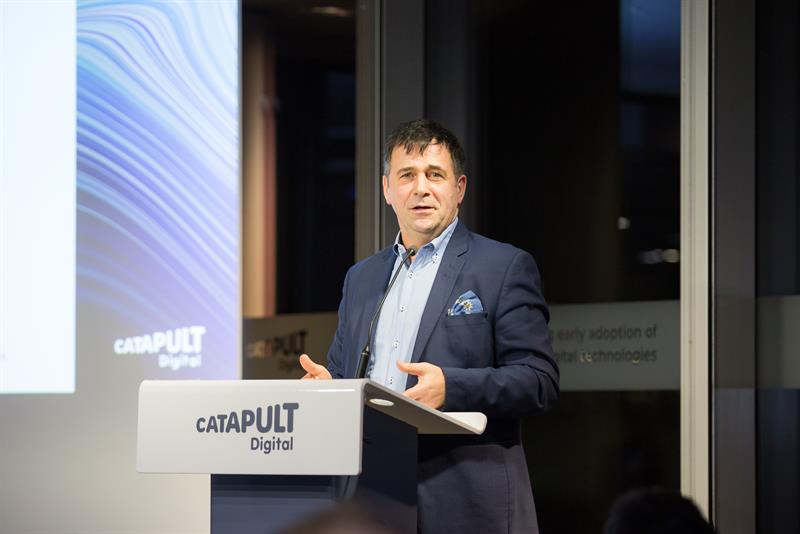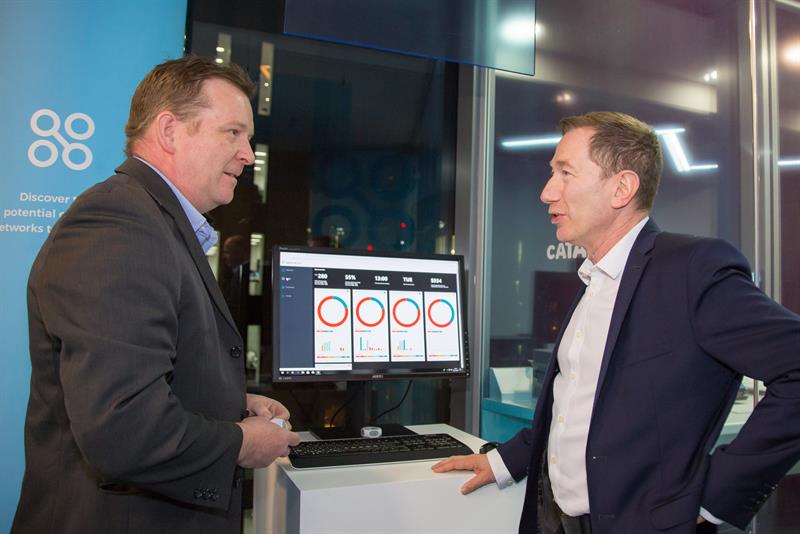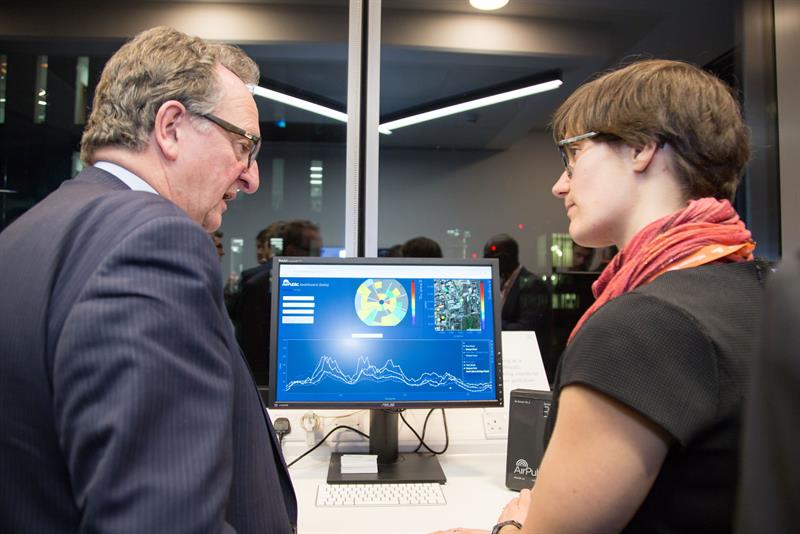Last month the Digital Catapult, working with a number of its partners, unveiled a new facility at its headquarters in London’s Kings Cross. The Future Networks Lab is intended to unlock value for industry by enabling collaboration and the experimentation and demonstration of new, cutting edge technologies.
The Lab is one of the first facilities in Europe that has been specifically designed with a focus on the Internet of Things (IoT), 5G and LPWAN technologies.
Speaking at the launch of the Lab, the Chief Executive Officer of the Digital Catapult, Jeremy Silver said that while we lived in incredibly uncertain times and that, “global competition, driven by technology itself, was as challenging as ever,” the UK’s ability to ‘swim’ in that environment would be dependent on its ability to take a different approach and to use, “its inventiveness”, to create “incredible solutions” and by combining technologies provide a, “glimpse of what was technologically possible going forward.”
According to Silver, UK businesses could lead the world in the development of new applications and services to run on advanced digital networks, but that they would need access to experimental testbeds and trial networks to try out new and risky ideas in a safe and measurable environment.
“While we need to be responsible when it comes to the development of technology here, in the UK, there is a real opportunity to create a truly dynamic digital nation and economy,” Silver suggested.
The Future Networks Lab, as described by Silver, is meant to help businesses achieve more and better understand the use of new technologies.
| The launch of the Future Networks Lab was welcomed by leading industry figures such as Siemens’ UK CEO, Juergen Maier (below left) and the Digital Catapult’s CEO, Jeremy Silver (below right) |


“It is a Lab for business to experiment and take risks in and to create a sense that while we can be innovative, we can also take technology out of the lab and into the real world.
“It will be a place for collaboration and important conversations; where technology is able to meet with industry. There are specific challenges if we are to fully realise the potential of the IoT and it’s at this kind of facility that we can find solutions,” Silver explained.
Partners
The Digital Catapult has partnered with BT, Siemens, PTC, Texas Instruments, IBM, SemTech and Servicenow to launch this dedicated facility for leading edge network technologies. But, alongside some of the UK’s leading industrial players, the Lab is intended to help companies of all sizes access the very latest in network technologies, as well as provide them with development opportunities and advice for the practical adoption of these technologies.
“We want to de-risk innovation and show how these technologies can be rolled out in practice, not just in theory,“ explained Peter Karney, Head of Innovation at the Catapult.
“We have a close relationship with a number of organisations,” Karney explained. “Take local authorities as an example. We work with them to identify specific issues that they are challenged by and what the level of interest is in addressing their problems. Is there a budget to pay for it and is it scalable? When you are dealing with SMEs or start-ups few have the resources or time to waste, so they need to be confident that any open call for solutions they enter into will have the possibility of delivering a real project of value at the end.”
Among the companies using the Lab and who have gone through that kind of process are VRM Tech, which has developed an innovative software platform to manage energy assets more efficiently and significantly reduce costs, while ensuring regulatory compliance.
The platform was developed out of a live project with Camden Council which has been able to use integrated KPI dashboards to monitor the district heat network that serves some 342 homes in Somers Town, London.
Another is Nwave, which is a company that has developed a vehicle detection sensor that interfaces with a driver identification (one-click payment) mobile app enabling a much easier and simpler experience when it comes to parking.
“Over the past five years our reputation has grown,” said Karney. “When the Catapult was established our focus was somewhat nebulous, but today and under Jeremy Silver’s leadership, we have increasingly been able to make what we do more tangible and real. We have worked with companies to turn designs and concepts into actual physical products."

Among the sponsors of the Lab is Semtech, which supplies high-performance analogue and mixed-signal semiconductors and advanced algorithms.
“Showcasing the world’s leading Internet of Things (IoT) solutions to developers and early corporate adopters will allow the Future Networks Lab to give companies hands-on access to LoRa Technology and IoT expertise,” explained Vivek Mohan, Director of IoT in Semtech’s Wireless and Sensing Products Group.
“This cooperative, vendor-neutral space, will help to foster innovation, reduce the time to market for LoRa-based solutions and help grow the LoRaWAN-based ecosystem in the UK,” Mohan suggested.
Speaking at the launch of the Lab Gerry McQuade, CEO of BT’s Enterprise business, said: “BT aims to be a leader in delivering 5G and IoT networks and services to UK businesses and the public sector.
“We’ve already conducted the UK’s first live trials of 5G with services set to launch across 16 cities initially this year. And we’re actively helping customers across the transport, logistics, utilities and retail sectors transform their operations through intelligent IoT solutions, for example, Stobart Group’s Rail & Civils Division.
“Collaboration with an ecosystem of partners and tech start-ups is key to success in this space. So, we’re pleased to be underpinning Digital Catapult’s Things Connected Network in London and extending our partnership through the new Future Networks Lab to encourage further innovation in 5G and IoT.”
| “It’s a Lab for businesses to experiment and take risks in; where technology is able to meet with industry.” - Jeremy Silver |
Another company heavily involved in the setting up of the Lab is Siemens.
Speaking at the launch, the company’s UK CEO, Juergen Maier, focused on the benefits of the Catapult network.
“The Catapult network that we have today has taken a number of years to develop and came as a response to the call for, and then development of, the UK’s Industrial Strategy,” he said.
“UK industry had been calling for a much stronger innovation ecosystem and the various Catapults that have been set up are now an essential part of the innovation ecosystem that now exists in the UK.”
Maier went on to say that Siemens’ involvement with the Future Networks Lab constituted a more formal partnership with the Digital Catapult.
“Siemens has been heavily involved, with other UK industrialists, with the adoption and creation of digital technology in manufacturing and what we have achieved to date would not have been possible without the help and direction of the Digital and High Value Manufacturing Catapults. However, we have to remember that while the UK is home to over a 1000 small businesses working in the area of artificial intelligence, for example, very few have found their way into the manufacturing space.
“That’s why we are so keen, as a business, to help extend and deepen the innovation ecosystem in the UK and why we have decided to be a part of this new Lab.
“The UK is very strong in health, fintech and the commercial application of AI and I believe
that knowledge and innovation can, and should, be able to find its way into the industrial landscape. The Future Networks Lab will have a critical role to play in delivering on this ambition.”













